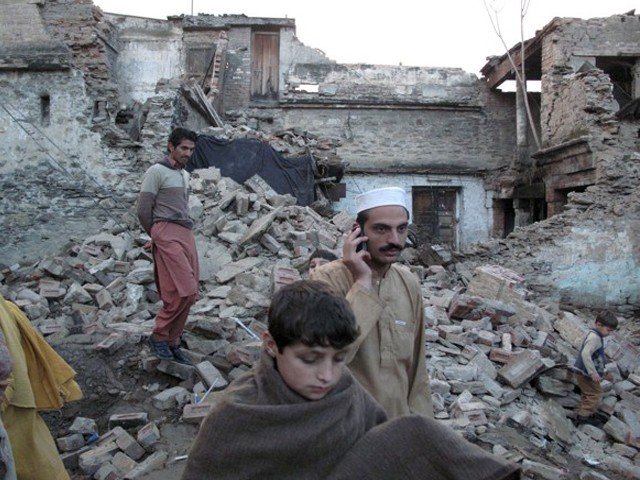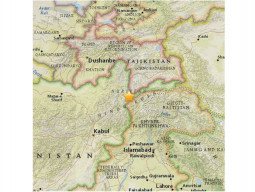
PESHAWAR:
The increase in seismic activity has baffled experts not only in Pakistan, but across the world as the frequency of earthquakes has seen an alarming rise in the Hindukush region.
The Pakistan Meteorology Department, meanwhile, is still in the process of developing an early monitoring system to minimise human losses.
Scores injured as powerful quake jolts Pakistan, Afghanistan
While the United States Geological Survey (USGS) refers to the area as “one of the most seismically hazardous regions on earth”, there is little understanding of what is happening below the surface of the earth. “Seismicity in the Himalaya dominantly results from the continental collision of the India and Eurasia plates, which are converging at a relative rate of 40-50 mm/yr. Northward under thrusting of India beneath Eurasia generates numerous earthquakes,” says the USGS.
There have been more than 170 recorded earthquakes or aftershocks since October 26, which measured 7.5 on the Richter scale, according to the geological survey. The phenomenon has not only spread panic, but created confusion even for seismologists who monitor the zone for aftershocks or fresh earthquakes.
“We are still researching the effects of that particular earthquake,” says Seismology Division Islamabad Director Zahid Rafi. “The thrust of the [Indian] plate was towards East and South East” he told The Express Tribune. This triggered a phenomenon which resulted in the increase of seismic activity in the region. “It has at times been difficult to determine whether these have been aftershocks or new earthquakes.”
However, one thing remains clear; the epicentre has been in the area surrounding Hindukush Mountains. While experts have traditionally believed an earthquake of the same magnanimity as October 26 would cause aftershocks, they expected no major quakes. However, another one that struck on December 7 measured 7.1 and this was followed by the 6.2 jolt (as per USGS) on December 26.
Sleepless in K-P: Paranoia grips people as tremors rock province again
Be warned
Keeping this in mind, the government has decided to set up an early warning system “particularly in areas to the North and North West” of the country, Rafi told The Express Tribune.
He said the chances of casualties during the day are relatively less in the event of a major quake. He adds if a 40-50 second window is provided for people to evacuate, the chances of loss of life are far less. However, the project is in its initial stages and still awaits funding.
The consolidated cost of the earthquake that caused widespread damage throughout Khyber-Pakhtunkhwa and Fata is US$317.19 million for all seven districts of Malakand Division alone. It will take up to two years to rebuild, while 280 people died throughout the country. Moreover 100,000 houses are completely or partially damaged.
While there is more panic and less understanding, the government has still not been able to sensitise people or come up with a policy to address construction codes. There has also been little in the way of sensitising citizens when it comes to safety.
“We have not yet been able to come to terms with the effects of the last earthquake,” a senior official of the Provincial Disaster Management Authority. He adds they can only pray the catastrophe does not repeat itself in the near future as the consequences will be devastating.
Published in The Express Tribune, December 28th, 2015.




























































COMMENTS
Comments are moderated and generally will be posted if they are on-topic and not abusive.
For more information, please see our Comments FAQ